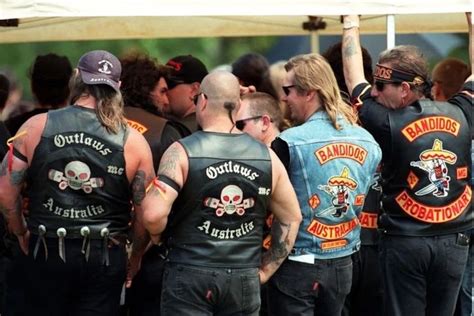
Outlaw Motorcycle Clubs in Utah: A History and Analysis of Their Activities and Impact
Introduction: The Allure of the Outlaw Lifestyle
In the heart of Utah's rugged landscapes and vibrant cities, a hidden world of outlaw motorcycle clubs (OMCs) thrives. These organizations, steeped in a culture of brotherhood, freedom, and counterculture, have captured the imagination of many, inspiring both fascination and apprehension. This comprehensive article delves into the history, activities, and impact of outlaw motorcycle clubs in Utah, shedding light on their unique subculture and the complex dynamics that shape their existence.
Historical Roots: The Birth of Outlaw Motorcycle Clubs
The origins of outlaw motorcycle clubs can be traced back to the post-World War II era in the United States. Returning veterans, seeking camaraderie and a sense of purpose, found solace in the open road and the brotherhood of motorcycles. However, as the counterculture movement gained momentum in the 1960s, a new breed of outlaw motorcycle clubs emerged, rejecting societal norms and embracing an anti-establishment ethos. This countercultural spirit found fertile ground in Utah, where the wide-open spaces and independent mindset provided a conducive environment for the establishment of OMCs.
Prominent Clubs and Their Territories
Utah is home to several notable outlaw motorcycle clubs, each with its own unique history and reputation. Among the most prominent are the Hells Angels, known for their iconic winged-skull logo and global presence; the Mongols, a club with a strong presence in California and Utah; and the Bandidos, a Texas-based club with a significant following in the state. These clubs have established territories across Utah, often centered around major cities like Salt Lake City, Ogden, and Provo, but their influence extends far beyond urban areas, reaching into rural communities and small towns.
Activities and Revenue Streams: Beyond the Open Road
While outlaw motorcycle clubs are often associated with riding motorcycles and participating in rallies, their activities extend far beyond the open road. Many OMCs engage in various forms of criminal activity to generate revenue and maintain their power. These activities can range from drug trafficking and weapons smuggling to extortion, prostitution, and money laundering. The illicit nature of these activities often leads to conflicts with law enforcement and rival clubs, resulting in violence and bloodshed.
Internal Structure and Leadership Dynamics
Outlaw motorcycle clubs operate with a strict internal structure, characterized by a rigid hierarchy and unwavering loyalty. At the helm of each club is the president, responsible for making major decisions and overseeing the club's activities. Below the president, there are various positions, including vice president, secretary, treasurer, and enforcer, each with specific roles and responsibilities. Membership in an OMC is highly selective, and prospective members must undergo a rigorous process of vetting and initiation before being granted full membership status.
Impact on Communities: A Mixed Bag of Consequences
The presence of outlaw motorcycle clubs in Utah has a multifaceted impact on communities across the state. On one hand, OMCs can contribute to local economies through their spending and involvement in legitimate businesses. Some clubs also engage in charitable activities, such as hosting fundraisers and supporting community events. However, the criminal activities associated with OMCs often outweigh any perceived benefits. Drug trafficking and violence can destabilize neighborhoods, while the presence of organized crime can create a climate of fear and intimidation. Law enforcement agencies face the constant challenge of monitoring and combating OMC activities, diverting resources and straining relationships with the communities they serve.
Law Enforcement's Response: A Balancing Act
Law enforcement agencies in Utah have adopted a multifaceted approach to addressing the challenges posed by outlaw motorcycle clubs. This includes increased surveillance, undercover operations, and targeted enforcement actions aimed at disrupting OMC activities and dismantling their criminal networks. However, striking a balance between effective law enforcement and respecting the rights of individual club members can be a delicate task. Law enforcement agencies must navigate complex legal and constitutional issues while also ensuring the safety and security of the communities they serve.
Conclusion: A Complex Subculture with Enduring Influence
Outlaw motorcycle clubs in Utah represent a unique and complex subculture, with a history steeped in counterculture, brotherhood, and criminal activity. Their presence has a profound impact on communities across the state, both positive and negative. While their criminal activities pose significant challenges for law enforcement and public safety, the allure of the outlaw lifestyle continues to attract individuals seeking adventure, camaraderie, and a sense of belonging. As society grapples with the ongoing presence of OMCs, finding effective strategies to address their criminal activities while respecting individual rights remains a critical task for law enforcement and policymakers.